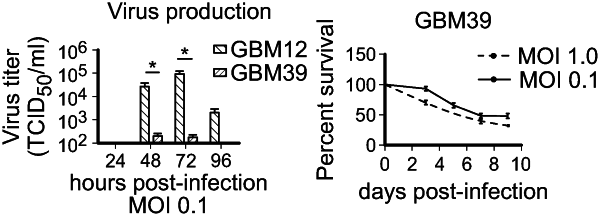| CPC A61K 35/768 (2013.01) [A61K 31/519 (2013.01); C12N 15/86 (2013.01); G01N 33/57484 (2013.01); C12N 2760/18432 (2013.01)] | 10 Claims |

|
1. A method for treating cancer in a mammal, wherein said method comprises:
(a) identifying said mammal as having cancer cells that have a virotherapy permissive interferon (IFN)-stimulated gene (ISG) signature, wherein said virotherapy permissive ISG signature comprises a decreased level of expression of at least 6 ISGs selected from the group consisting of HLA-A, HLA-B, HLA-C, HLA-E, HLA-G, IFI27, IFI35, IFI6, IFIT1, IFIT3, IRF1, IRF2, IRF9, ISG15, MX1, MX2, OAS1, OAS2, OAS3, OASL, SOCS1, and STAT2, wherein said virotherapy permissive ISG signature indicates that said cancer cells are responsive to treatment with an oncolytic virus; and
(b) administering said oncolytic virus to said mammal under conditions wherein the number of cancer cells within said mammal is reduced.
|